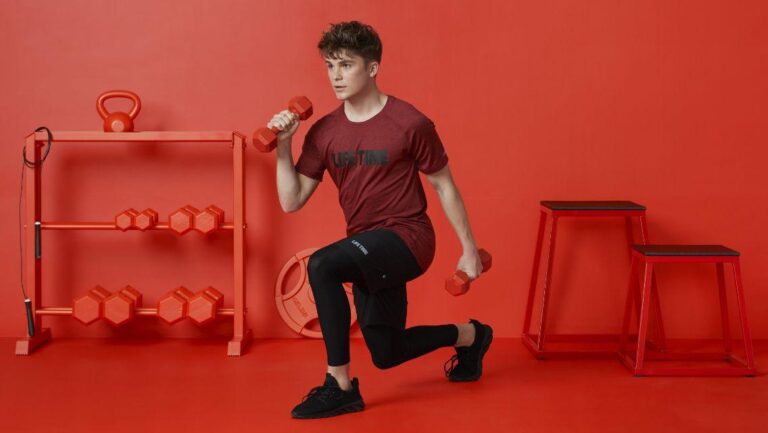In today’s fast-paced world,maintaining physical health is more meaningful than ever—especially for teens navigating the challenges of growth and development. “” is designed too empower young individuals with the knowledge and tools they need to build a strong, healthy foundation.This extensive program not only focuses on physical conditioning but also promotes confidence, discipline, and lifelong wellness habits. Whether you’re a teen looking to boost athletic performance or simply eager to improve overall fitness,this guide offers expert-backed strategies tailored to help you reach your full potential safely and effectively.
Table of Contents
- Understanding the Foundations of Teen Strength Training
- Designing a Safe and Effective Workout Routine for Adolescents
- Nutrition Tips to Support Muscle Growth and Recovery
- Tracking Progress and Staying Motivated Throughout the Program
- To Wrap It Up
Understanding the Foundations of Teen Strength Training
When delving into teen strength training,it’s essential to recognize the unique physiological and developmental stage that adolescents are in. Unlike adults, teens are still growing, and this growth phase demands a training approach that prioritizes safety, technique, and gradual progression. Emphasizing proper form and controlled movements helps prevent injuries and builds a solid foundation for long-term strength and fitness. Additionally, understanding that strength gains come from a combination of neuromuscular adaptation and muscle development is key to structuring effective workouts that enhance coordination, balance, and muscular endurance.
To create a balanced training routine for teens,it’s critically important to focus on a variety of components that support overall health and athletic performance,including:
- Core stability: Strengthening the core promotes better posture and injury prevention.
- Functional exercises: These mimic real-life movements and improve daily performance.
- Progressive overload: Gradually increasing intensity to stimulate steady muscle growth.
- Rest and recovery: Vital for muscle repair and avoiding burnout.
- nutrition and hydration: Supporting workouts with adequate fuel and fluids enhances results.
This holistic approach not only accelerates strength development but also fosters a positive attitude toward fitness that can last a lifetime.
Designing a Safe and Effective Workout Routine for Adolescents
When crafting a routine tailored for teenagers, it’s crucial to focus on gradual progression and proper form to prevent injuries. Starting with low-impact exercises such as bodyweight squats, lunges, and planks helps build a stable foundation.Incorporating dynamic warm-ups before each session not only prepares the muscles but also enhances versatility and coordination. Remember,recovery is just as critically important as the workout itself—adequate rest days and hydration play pivotal roles in muscle growth and overall well-being.
Adolescents should embrace a balanced workout plan that targets multiple muscle groups to promote symmetry and functional strength.Here are some essentials to keep in mind for an effective and safe program:
- Supervised Training: Guidance from fitness professionals ensures exercises are performed correctly.
- Age-Appropriate Loads: Use light weights or resistance bands initially to foster muscular endurance.
- Consistent Routine: Aim for 3 to 4 sessions a week, striking a balance between effort and rest.
- Variety: Combine strength training, cardio, and flexibility exercises for holistic fitness.
nutrition Tips to Support Muscle Growth and Recovery
To optimize muscle growth and speed up recovery, focus on a balanced intake of high-quality proteins, carbohydrates, and healthy fats. Proteins, such as lean meats, dairy, legumes, and plant-based sources, provide the essential amino acids that repair and build muscle fibers. Carbohydrates replenish glycogen stores depleted during intense training, fueling your next session and preventing fatigue. Don’t forget to include sources of omega-3 fatty acids like salmon, walnuts, and flaxseeds, wich help reduce inflammation and promote faster healing.
Hydration and nutrient timing play a crucial role as well. drinking plenty of water throughout the day supports nutrient transport and muscle function, while consuming a protein-rich snack or meal within 30-60 minutes post-workout enhances muscle repair. Consider incorporating:
- Greek yogurt with berries for antioxidants and protein
- whole grain toast with almond butter for sustained energy
- Chocolate milk as a tasty recovery drink rich in carbs and protein
These strategies form the foundation of effective nutrition to support your teen fitness journey and help you build strength efficiently.
Tracking Progress and Staying Motivated Throughout the Program
Consistency is key when it comes to building strength, but staying on track can sometimes feel overwhelming. One effective way to maintain momentum is by setting short-term goals that are realistic and measurable. consider keeping a fitness journal or using an app to log your workouts, noting improvements in reps, weights, or endurance. Tracking progress visually—such as through charts or progress photos—can transform abstract efforts into tangible achievements, reinforcing your commitment and fueling your motivation to push further.
In addition to monitoring progress, cultivating a positive mindset is essential. Celebrate small victories along the way and surround yourself with a supportive community.Share your journey with friends, family, or fitness groups to exchange encouragement and tips. Remember, setbacks are a natural part of any fitness journey. when challenges arise, focus on what you’ve accomplished and reset your goals accordingly. Here are some quick tips to stay motivated:
- Mix up your routine to keep workouts exciting and prevent burnout.
- Reward yourself after hitting milestones—whether it’s a new workout outfit or a fun activity.
- Visualize your success by imagining how building strength will positively impact your life.
To Wrap It Up
Building strength is a transformative journey, especially for teens navigating the exciting years of growth and development.With the right fitness training program—one that emphasizes proper technique, balanced nutrition, and consistent effort—young athletes can unlock their full potential, boost confidence, and lay a solid foundation for lifelong health. Remember,strength isn’t just about the physical gains; it’s about cultivating discipline,resilience,and a positive mindset. Whether you’re just starting out or looking to take your training to the next level, make safety and smart progress your top priorities. Here’s to empowering the next generation with the tools they need to grow stronger every day!

